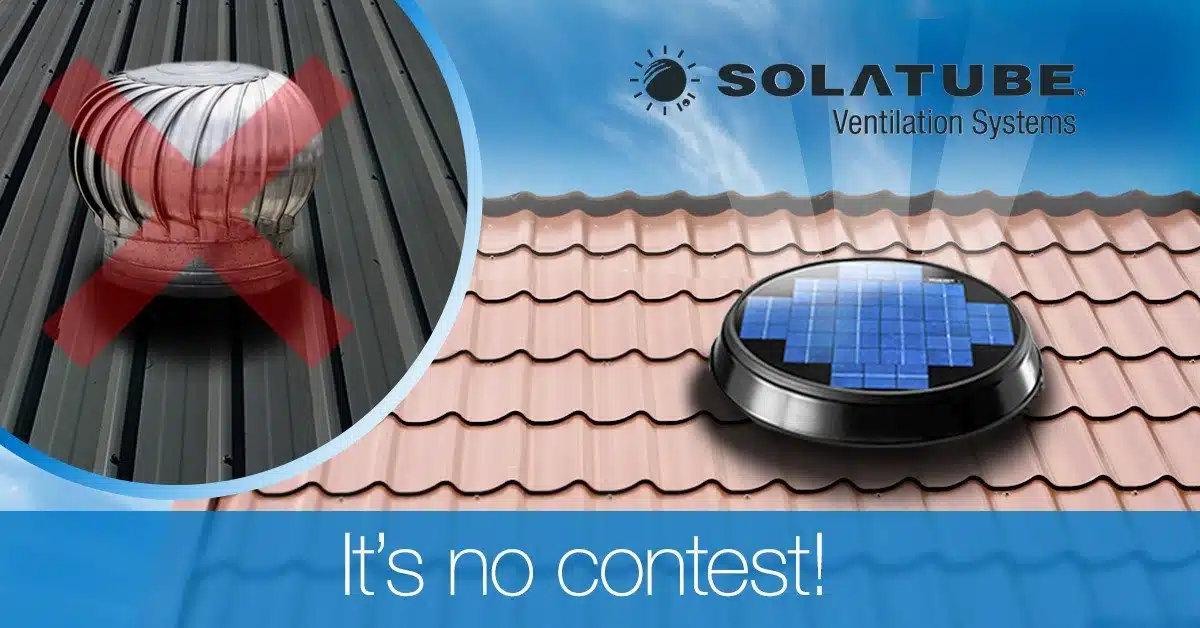
Let’s start with the most important question. How much should a solar powered roof ventilator cost?
While solar panel manufacturing costs are reducing, a quality motor and solar panel will always be the most expensive components of a solar roof ventilator. Customers should expect to pay between $500 and $900 for a solar roof ventilation product that will last. When compared to the recommended 2-4 quality whirly birds (@200 each for a quality whirly bird) for a standard home, a single Solar Star is very worthwhile.Performance
CAUTION – There are many imported products that are making false air flow claims in the market place. Any air flow performance should be tested by a NATA approved testing house to ISO5801. Any performance claims that cannot provide clarification of this testing should be regarded as false. There are many performance claims made on the market, but solar powered roof ventilation is going to make a substantial difference compared to wind vents. What are the most important things you need to review when purchasing roof ventilation? The best way to know if you are getting value is understanding the wattage of the solar panel and the diameter of the extraction fan. While there are other variables this will provide you with the simplest and easiest comparison between solar roof ventilation systems.Warranty
While it’s standard to offer 10-15 years warranty on a solar panel, ensure you read the fine print. Most will exclude components, usually offering 1-3 years on the motor.Installation
With many imports being shipped directly from overseas, consumers need to be careful selecting product for harsh environments such as Australia. A single, one-size-fits-all flashing creates similar issues with leaking as in traditional low-quality skylights. Consumers should always look for roof flashings that are tailored to the contours of their roof.Market prices
Wind vents can range from $80 – $350 per unit. The average air volume is tested at approximately 80-100m3 per hour which is relatively inefficient. Often these products will have similar performance to a static cap. They have been popular in the Australian market as they are cheap to give away with insulation and roofing packages.The main pricing differences with wind vents, is all about quality. What should you look for:
- Do they include a fan blade? this will absolutely help improve air extraction
- What’s the diameter of the product – for domestic homes, ranges are from 250-350mm diameter
- Warranty – life or the bearings is the biggest issue with wind vents. You can see many low- quality wind vents with seized or noisy bearings on Australian homes
Budget Solar roof vents $100 – $250 per unit
When looking for any solar powered product, be prepared to spend extra for a quality system. Budget solar powered roof vents achieve low prices through poor quality motors and solar panels. Both of these lead to very poor performance, offering little to no benefit over a standard wind vent and often have a warranty no longer than a year. If you have only allowed for this in your budget you should stick to a quality whirly bird.Quality solar roof vent $500 – $900
We have already discussed how to select the correct product type but what are some other common questions and requests?By how much will roof ventilation reduce the temperature in my home. This is a question that is almost impossible to answer, as there are many variables such as; insulation and roof material, tiles with sarking and colour bond roof materials will hold in more heat. Tiles without sarking will allow more cross flow ventilation. They best way to check how ventilation will work for you, is to put your head up into the roof cavity and feel the temperature. Your roof cavity can easily reach 60deg+ so exchanging this air with cooler air from outside, will have a major impact.
How many eave vents do I need?
There are many recommendations but variables such as sarking or no sarking on a tiled roof can have an impact. The best way to tell is by opening the man hole in the ceiling. If you are still feeling substantial air being drawn through the man hole after the ventilation is installed, you probably need more eave ventsDo they run at night?
Most operate exactly like a whirlybird but instead of operating with the wind, they operate with the sun. A whirlybird will not operate on a hot and still summer day, and a solar roof ventilator does not motorise at night. A wind vent has similar performance to a static cap and like a static cap, a solar roof ventilator will still allow natural air convention at night.Battery backup – these are often requested by customers, but you should be aware of the pit falls and weigh up the extra costs.
- Batteries often only have a 1-year warranty. Depending on the quality, these should be checked and replaced every 1-2 years
- Batteries do not often deal with extreme temperatures – in fact there have been many recalls for roof space battery operated products due to fire hazards.
- You divert a lot of sun energy to charging rather than ventilation